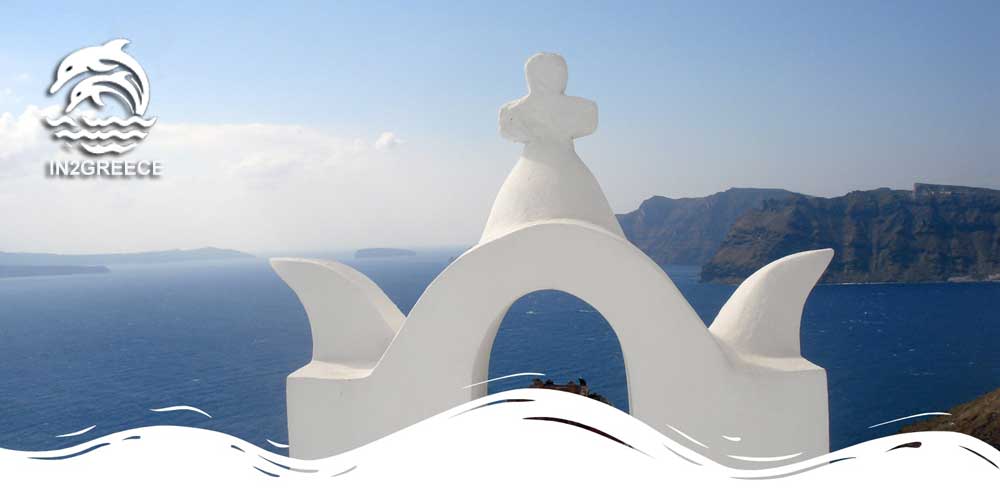The capital of Karpathos

The port and capital of the Aperites was Possi, a lowland and fertile area, in which some wells were opened over time. After 1821, some warehouses were gradually built in this place. Around 1850, a settlement of 50 residents originally from Aperi was created, who were later surrounded by residents from Volada and Menetes.
Because of the many wells, it got the name Pigadia and in 1892, with about 150 inhabitants, it became the capital of the island in the place of Aperio, until then an established administrative center.
After all this, other populations came down from the rest of the villages and several families arrived from the maritime islands of the Dodecanese (Kasos, Halki, Symi, Kalymnos and Kastellorizo), Rhodes and Crete.

After the war, other individual residents from the rest of Greece also settled. Until 1998, Pigadia was an autonomous municipality, when it became the seat of the Kapodistrian municipality of Karpathos, while since 2010 it has been the capital of the Kallikrate municipality of Karpathos.
Today, Pigadia is a modern town of about 3,000 permanent residents, with many hotels and services, cafes and restaurants. Here are the ancient acropolis of Poseidus and scattered architectural monuments from the time of the Italian occupation (1912-1944). In Pigadia there is the main port of the island and a modern organized marina for pleasure boats.
As the capital of Karpathos, Pigadia also represents a special value for vacationers, as most hotels and apartments were built in the settlement’s catchment area, and most travelers, including the majority of Hungarian vacationers arriving by plane, choose accommodation here.
Pigadia is the capital of Karpathos
Pigadia, often called the town of Karpathos, and often simply called Karpathos (Κάρπαθος) on maps, has a population of 2,700 people who live their daily lives mainly from the ever-increasing tourism and agriculture. The settlement has an ancient past, because in ancient times the city of Potideon (Ancient Potideon) flourished here, which was also a well-known and defining settlement in the Aegean region.
Pigadia, which has a very characteristic location and offers a particularly picturesque view in many details, is smaller than the big cities of Crete or the capital of Rhodes, but you can find almost everything here that the locals and the tourists who come here in the summer may need. In addition to small and large supermarkets, gift shops, clothing stores, restaurants and cafes, various service providers take care of the people living here, thanks to which most of the shops of Karpathos are located in this corner of the island.
Pigadia
From the streets of the capital of Karpathos, bars with a pleasant atmosphere, taverns offering both traditional Greek dishes and more modern dishes, but also bakeries offering mouth-watering baked goods, cakes and desserts are open. Important information about Pigadia is that the numerous car and motorcycle rental companies operating here, as well as the boat trips departing from here, contribute to a vacation rich in experiences: this part of the island is also recommended as a starting point.
Several excursion boats depart for exploring the best beaches of Karpathos (including Apella beach or Kyra Panagia beach) and attractions such as the island of Saria.
One of the main centers of life in Pigadia is of course the port and its surroundings, where most shops and restaurants are concentrated. The seaside promenade, which runs alongside the capital’s outer row of houses, turns into a bustling pedestrian street on summer evenings, where local residents and vacationers alike enjoy walking, sightseeing, and shopping, and the taverns and bars are filled with life and a cheerful atmosphere.
Architecture
Due to the unique geographical features of Pigadia, most of the capital’s buildings are raised between the sea and the surrounding rocky hills, relatively densely next to each other, often built next to each other. This is partly the reason why there are relatively many one-way road sections in the capital of Karpathos, and some central, narrow streets are not even allowed to enter by car at all. A part of the center of Pigadia thus functions as a pedestrian street on a daily basis, where you can only travel on foot, thus creating safer conditions.
Due to the narrow streets of the city center, larger parking spaces have been created in the center of the capital of Karpathos, where it is possible to park vehicles for locals and vacationers visiting Pigadia from further afield. The center is mainly dominated by residential buildings, apartments and studios were built above the shops, while the majority of the larger hotels were built outside the city center.
Beaches
A row of hotels and apartments stretch in front of the pebble, pebble and stony beach, umbrellas and sunbeds cover the beach, making it one of the fully developed and most visited beaches of Karpathos.
It is worth knowing about the several kilometers long beach that it was divided into several smaller sections due to its size, and apart from the name Pigadia beach, further away from the city center are Limniatis beach, Afoti beach and Vrontis
Nightlife in Pigadia
The capital of the island of Karpathos really bustles mainly in the summer, from May to mid-autumn: in the cooler winter months, the city is almost depopulated, and flight holidays are suspended at this time. During this period, some of the restaurants also close, many tourism workers and guest workers leave the island to come back again in the spring.
